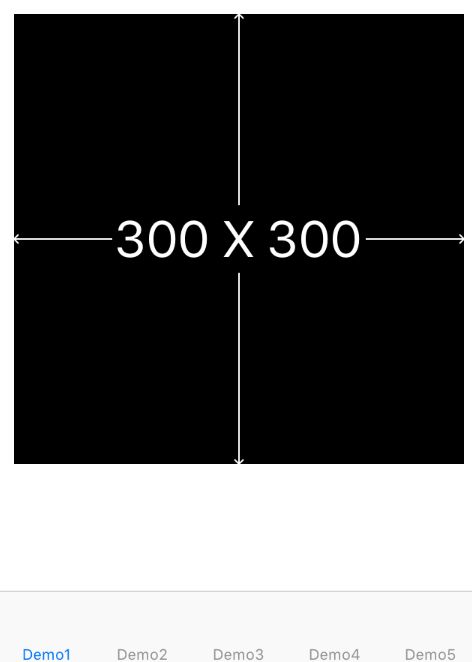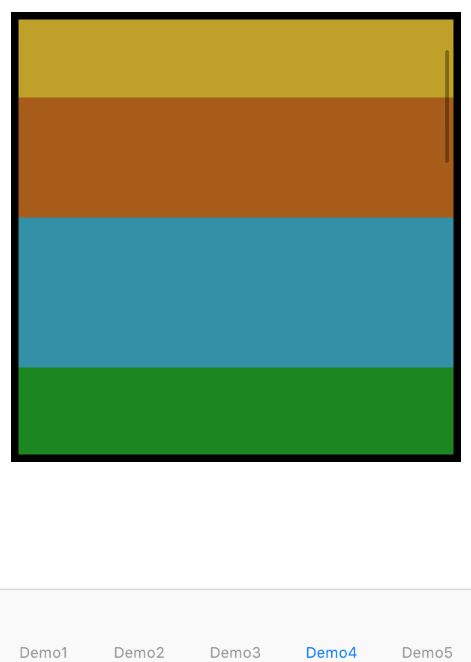前言
纯手写代码一共经历了三个时期,这里我就不介绍了,随着iPhone6的出现,苹果手机的尺寸也就不在单一。为了让自己的软件能够完美适配各款机型,autolayout必然是页面布局的必然趋势,利用CGRectMake布局的局限性显得越来越大。
那如何快速的上手autolayout呢? 当年iOS6推出的同时新增了autolayout的特性,现在已经发展到iOS10,可是我就一直没用过,我看了一下官方文档和demo 就立马抛弃到一边了,因为实在过于的繁琐和啰嗦!那么就引出了今天的主角-第三方库Masonry,经过查询加研究,我只经过几个小时的时间便已经可以熟练掌握了,这也就是我写这篇文章推荐它的真正原因,简单易懂,操作方便!
文中的Demo我写在一个工程中,需要的请在文章末尾下载,如遇问题欢迎在评论区提问。
Masonry和MMPlaceHolder简单介绍
Masonry源码!
Masonry是一个轻量级的布局框架 拥有自己的描述语法 采用更优雅的链式语法封装自动布局 简洁明了 并具有高可读性 而且同时支持 iOS 和 Max OS X
Masonry属性与NSLayoutAttrubute的对照表如下:
| Masonry属性 | NSAutoLayout | 说明 |
|---|---|---|
| left | NSLayoutAttributeLeft | 左侧 |
| top | NSLayoutAttributeTop | 上侧 |
| right | NSLayoutAttributeRight | 右侧 |
| bottom | NSLayoutAttributeBottom | 下侧 |
| leading | NSLayoutAttributeLeading | 首部 |
| trailing | NSLayoutAttributeTrailing | 尾部 |
| width | NSLayoutAttributeWidth | 宽 |
| height | NSLayoutAttributeHeight | 高 |
| centerX | NSLayoutAttributeCenterX | 横向中点 |
| centerY | NSLayoutAttributeCenterY | 纵向中点 |
| baseline | NSLayoutAttributeBaseline | 文本基线 |
其中leading与left trailing与right 在正常情况下是等价的 但是当一些布局是从右至左时(比如阿拉伯文?没有类似的经验) 则会对调 换句话说就是基本可以不理不用 用left和right就好了。
Masonry中能够添加autolayout约束有三个函数
- (NSArray *)mas_makeConstraints:(void(^)(MASConstraintMaker *make))block;
- (NSArray *)mas_updateConstraints:(void(^)(MASConstraintMaker *make))block;
- (NSArray *)mas_remakeConstraints:(void(^)(MASConstraintMaker *make))block;
mas_makeConstraints 只负责新增约束 Autolayout不能同时存在两条针对于同一对象的约束 否则会报错
mas_updateConstraints 针对上面的情况 会更新在block中出现的约束 不会导致出现两个相同约束的情况
mas_remakeConstraints 则会清除之前的所有约束 仅保留最新的约束
三种函数善加利用 就可以应对各种情况了
MMPlaceHolder源码!
- 一行代码解决显示问题 简单易用
- 搭建码农和设计之间的沟通桥梁 减少沟通成本(Talk is cheap. Show me the code.)
- 显示大小自适应(最小支持30*30哦)
** MMPlaceHolder使用 **
- (void)showPlaceHolder;//常用
- (void)showPlaceHolderWithLineColor:(UIColor*)lineColor;
- (void)showPlaceHolderWithLineColor:(UIColor*)lineColor backColor:(UIColor*)backColor;
- (void)showPlaceHolderWithLineColor:(UIColor*)lineColor backColor:(UIColor*)backColor arrowSize:(CGFloat)arrowSize;
- (void)hidePlaceHolder;
- (MMPlaceHolder *)getPlaceHolder;
5个Demo轻松学会
- 为了方便 我们测试的superView都是一个size为(300,300)的UIView
- 下面通过5个简单的实例由浅入深教你如何轻松愉快的使用Masonry
1.[基础] 居中显示一个view
注:代码中有注释,因此代码我将不多做解释,还是不懂可以在文章评论区提问或者私信我!
- (void)viewDidLoad {
[super viewDidLoad];
//从此之后基本可以抛弃CGRectMake了
UIView *sv = [UIView new];
[sv showPlaceHolder];
sv.backgroundColor = [UIColor blackColor];
//在做autoLayout之前 一定要先将view添加到superview上 否则会报错
[self.view addSubview:sv];
//mas_makeConstraints就是Masonry的autolayout添加函数 将所需的约束添加到block中行了
[sv mas_makeConstraints:^(MASConstraintMaker *make) {
//将sv居中(很容易理解吧?)
make.center.equalTo(self.view);
//将size设置成(300,300)
make.size.mas_equalTo(CGSizeMake(300, 300));
}];
}
效果图:
- 这里有个问题,equalTo 和 mas_equalTo的区别在哪里呢? 其实 mas_equalTo就是一个MACRO
#define mas_equalTo(...) equalTo(MASBoxValue((__VA_ARGS__)))
#define mas_greaterThanOrEqualTo(...) greaterThanOrEqualTo(MASBoxValue((__VA_ARGS__)))
#define mas_lessThanOrEqualTo(...) lessThanOrEqualTo(MASBoxValue((__VA_ARGS__)))
#define mas_offset(...) valueOffset(MASBoxValue((__VA_ARGS__)))
- 可以看到mas_equalTo只是对其参数进行了一个BOX操作(装箱) MASBoxValue的定 义具体可以看看源代码 太长就不贴出来了
- 所支持的类型 除了NSNumber支持的那些数值类型之外 就只支持CGPoint CGSize UIEdgeInsets
2.[初级] 让一个view略小于其superView(边距为10)
- (void)viewDidLoad {
[super viewDidLoad];
//此处sv作为superView
UIView *sv = [UIView new];
sv.backgroundColor = [UIColor blackColor];
[self.view addSubview:sv];
[sv mas_makeConstraints:^(MASConstraintMaker *make) {
make.center.equalTo(self.view);
make.size.mas_equalTo(CGSizeMake(300, 300));
}];
UIView *sv1 = [UIView new];
[sv1 showPlaceHolder];
sv1.backgroundColor = [UIColor redColor];
[sv addSubview:sv1];
[sv1 mas_makeConstraints:^(MASConstraintMaker *make) {
make.edges.equalTo(sv).with.insets(UIEdgeInsetsMake(10, 10, 10, 10));
/* 等价于
make.top.equalTo(sv).with.offset(10);
make.left.equalTo(sv).with.offset(10);
make.bottom.equalTo(sv).with.offset(-10);
make.right.equalTo(sv).with.offset(-10);
*/
/* 也等价于
make.top.left.bottom.and.right.equalTo(sv).with.insets(UIEdgeInsetsMake(10, 10, 10, 10));
*/
}];
}
效果图
可以看到 edges 其实就是top,left,bottom,right的一个简化 分开写也可以 一句话更省事。
那么为什么bottom和right里的offset是负数呢? 因为这里计算的是绝对的数值 计算的bottom需要小于sv的底部高度 所以要-10 同理用于right。
这里有意思的地方是and和with 其实这两个函数什么事情都没做。
- (MASConstraint *)with {
return self;
}
- (MASConstraint *)and {
return self;
}
- 但是用在这种链式语法中 就非常的巧妙和易懂 不得不佩服作者的心思(看不懂的请忽略)。
3.[初级] 让两个高度为150的view水平居中且等宽且等间隔排列 间隔为10(自动计算其宽度)
*vc中代码如下:
- (void)viewDidLoad {
[super viewDidLoad];
// Do any additional setup after loading the view.
UIView *sv = [UIView new];
sv.backgroundColor = [UIColor blackColor];
[self.view addSubview:sv];
[sv mas_makeConstraints:^(MASConstraintMaker *make) {
make.center.equalTo(self.view);
make.size.mas_equalTo(CGSizeMake(300, 300));
}];
int padding1 = 10;
UIView *sv2 = [UIView new];
[sv2 showPlaceHolder];
sv2.backgroundColor = [UIColor orangeColor];
[self.view addSubview:sv2];
UIView *sv3 = [UIView new];
[sv3 showPlaceHolder];
sv3.backgroundColor = [UIColor orangeColor];
[self.view addSubview:sv3];
[sv2 mas_makeConstraints:^(MASConstraintMaker *make) {
make.centerY.mas_equalTo(sv.mas_centerY);
make.left.equalTo(sv.mas_left).with.offset(padding1);
make.right.equalTo(sv3.mas_left).with.offset(-padding1);
make.height.mas_equalTo(@150);
make.width.equalTo(sv3);
}];
[sv3 mas_makeConstraints:^(MASConstraintMaker *make) {
make.centerY.mas_equalTo(sv.mas_centerY);
make.left.equalTo(sv2.mas_right).with.offset(padding1);
make.right.equalTo(sv.mas_right).with.offset(-padding1);
make.height.mas_equalTo(@150);
make.width.equalTo(sv2);
}];
}
效果图:
- 这里我们在两个子view之间互相设置的约束 可以看到他们的宽度在约束下自动的被计算出来了。
4.[中级] 在UIScrollView顺序排列一些view并自动计算contentSize
- vc中代码如下:
- (void)viewDidLoad {
[super viewDidLoad];
// Do any additional setup after loading the view.
UIView *sv = [UIView new];
sv.backgroundColor = [UIColor blackColor];
[self.view addSubview:sv];
[sv mas_makeConstraints:^(MASConstraintMaker *make) {
make.center.equalTo(self.view);
make.size.mas_equalTo(CGSizeMake(300, 300));
}];
UIScrollView *scrollView = [UIScrollView new];
scrollView.backgroundColor = [UIColor whiteColor];
[sv addSubview:scrollView];
[scrollView mas_makeConstraints:^(MASConstraintMaker *make) {
make.edges.equalTo(sv).with.insets(UIEdgeInsetsMake(5,5,5,5));
}];
UIView *container = [UIView new];
[scrollView addSubview:container];
[container mas_makeConstraints:^(MASConstraintMaker *make) {
make.edges.equalTo(scrollView);
make.width.equalTo(scrollView);
}];
int count = 10;
UIView *lastView = nil;
for ( int i = 1 ; i <= count ; ++i )
{
UIView *subv = [UIView new];
[container addSubview:subv];
subv.backgroundColor = [UIColor colorWithHue:( arc4random() % 256 / 256.0 )
saturation:( arc4random() % 128 / 256.0 ) + 0.5
brightness:( arc4random() % 128 / 256.0 ) + 0.5
alpha:1];
[subv mas_makeConstraints:^(MASConstraintMaker *make) {
make.left.and.right.equalTo(container);
make.height.mas_equalTo(@(20*i));
if ( lastView )
{
make.top.mas_equalTo(lastView.mas_bottom);
}
else
{
make.top.mas_equalTo(container.mas_top);
}
}];
lastView = subv;
}
[container mas_makeConstraints:^(MASConstraintMaker *make) {
make.bottom.equalTo(lastView.mas_bottom);
}];
}
效果图如下:
- 从scrollView的scrollIndicator可以看出 scrollView的内部已如我们所想排列好了。
- 这里的关键就在于container这个view起到了一个中间层的作用 能够自动的计算uiscrollView的contentSize。
5. [高级] 横向或者纵向等间隙的排列一组view
- 很遗憾 autoLayout并没有直接提供等间隙排列的方法(Masonry的官方demo中也没有对应的案例) 但是参考案例3 我们可以通过一个小技巧来实现这个目的 为此我写了一个Category。
//
// UIView+ZXB.m
// DemoOfMasonry
//
// Created by Mars_ZXB on 16/8/18.
// Copyright © 2016年 BAT3. All rights reserved.
//
#import "UIView+ZXB.h"
#import "Masonry.h"
@implementation UIView (ZXB)
- (void) distributeSpacingHorizontallyWith:(NSArray*)views
{
NSMutableArray *spaces = [NSMutableArray arrayWithCapacity:views.count+1];
for ( int i = 0 ; i < views.count+1 ; ++i )
{
UIView *v = [UIView new];
[spaces addObject:v];
[self addSubview:v];
[v mas_makeConstraints:^(MASConstraintMaker *make) {
make.width.equalTo(v.mas_height);
}];
}
UIView *v0 = spaces[0];
[v0 mas_makeConstraints:^(MASConstraintMaker *make) {
make.left.equalTo(self.mas_left);
make.centerY.equalTo(((UIView*)views[0]).mas_centerY);
}];
UIView *lastSpace = v0;
for ( int i = 0 ; i < views.count; ++i )
{
UIView *obj = views[i];
UIView *space = spaces[i+1];
[obj mas_makeConstraints:^(MASConstraintMaker *make) {
make.left.equalTo(lastSpace.mas_right);
}];
[space mas_makeConstraints:^(MASConstraintMaker *make) {
make.left.equalTo(obj.mas_right);
make.centerY.equalTo(obj.mas_centerY);
make.width.equalTo(v0);
}];
lastSpace = space;
}
[lastSpace mas_makeConstraints:^(MASConstraintMaker *make) {
make.right.equalTo(self.mas_right);
}];
}
- (void) distributeSpacingVerticallyWith:(NSArray*)views
{
NSMutableArray *spaces = [NSMutableArray arrayWithCapacity:views.count+1];
for ( int i = 0 ; i < views.count+1 ; ++i )
{
UIView *v = [UIView new];
[spaces addObject:v];
[self addSubview:v];
[v mas_makeConstraints:^(MASConstraintMaker *make) {
make.width.equalTo(v.mas_height);
}];
}
UIView *v0 = spaces[0];
[v0 mas_makeConstraints:^(MASConstraintMaker *make) {
make.top.equalTo(self.mas_top);
make.centerX.equalTo(((UIView*)views[0]).mas_centerX);
}];
UIView *lastSpace = v0;
for ( int i = 0 ; i < views.count; ++i )
{
UIView *obj = views[i];
UIView *space = spaces[i+1];
[obj mas_makeConstraints:^(MASConstraintMaker *make) {
make.top.equalTo(lastSpace.mas_bottom);
}];
[space mas_makeConstraints:^(MASConstraintMaker *make) {
make.top.equalTo(obj.mas_bottom);
make.centerX.equalTo(obj.mas_centerX);
make.height.equalTo(v0);
}];
lastSpace = space;
}
[lastSpace mas_makeConstraints:^(MASConstraintMaker *make) {
make.bottom.equalTo(self.mas_bottom);
}];
}
@end
- 下面开始在vc中布局,记得引用类目!
- (void)viewDidLoad {
[super viewDidLoad];
UIView *sv = [UIView new];
[sv showPlaceHolder];
sv.backgroundColor = [UIColor blackColor];
[self.view addSubview:sv];
[sv mas_makeConstraints:^(MASConstraintMaker *make) {
make.center.equalTo(self.view);
make.size.mas_equalTo(CGSizeMake(300, 300));
}];
UIView *sv11 = [UIView new];
UIView *sv12 = [UIView new];
UIView *sv13 = [UIView new];
UIView *sv21 = [UIView new];
UIView *sv31 = [UIView new];
sv11.backgroundColor = [UIColor redColor];
sv12.backgroundColor = [UIColor redColor];
sv13.backgroundColor = [UIColor redColor];
sv21.backgroundColor = [UIColor redColor];
sv31.backgroundColor = [UIColor redColor];
[sv addSubview:sv11];
[sv addSubview:sv12];
[sv addSubview:sv13];
[sv addSubview:sv21];
[sv addSubview:sv31];
//给予不同的大小 测试效果
[sv11 mas_makeConstraints:^(MASConstraintMaker *make) {
make.centerY.equalTo(@[sv12,sv13]);
make.centerX.equalTo(@[sv21,sv31]);
make.size.mas_equalTo(CGSizeMake(40, 40));
}];
[sv12 mas_makeConstraints:^(MASConstraintMaker *make) {
make.size.mas_equalTo(CGSizeMake(70, 20));
}];
[sv13 mas_makeConstraints:^(MASConstraintMaker *make) {
make.size.mas_equalTo(CGSizeMake(50, 50));
}];
[sv21 mas_makeConstraints:^(MASConstraintMaker *make) {
make.size.mas_equalTo(CGSizeMake(50, 20));
}];
[sv31 mas_makeConstraints:^(MASConstraintMaker *make) {
make.size.mas_equalTo(CGSizeMake(40, 60));
}];
[sv distributeSpacingHorizontallyWith:@[sv11,sv12,sv13]];
[sv distributeSpacingVerticallyWith:@[sv11,sv21,sv31]];
[sv showPlaceHolderWithAllSubviews];
[sv hidePlaceHolder];
}
效果图:
- 完美!!!简洁明了的达到了我们所要的效果。
- 这里所用的技巧就是 使用空白的占位view来填充我们目标view的旁边 这点通过图上的空白标注可以看出来。
总结
- 通过以上5个案例 我觉得已经把Masonry的常用功能介绍得差不多了, 如果你觉得意犹未尽,请下载官方的demo来学习.
- 总而言之 Masonry是一个非常优秀的autolayout库,能够节省大量的开发和学习时间,尤其适合不习惯xib、sb编程的朋友, Masonry一定可以助你一臂之力!
- 我将文中的5个例子写到了一个工程中,怕有的朋友进不去GitHup,特传到网盘中,有需要的可以下载看看,遇到问题可在评论区提问。文中的Demo代码下载 (提取码:61b3)
- 感谢里脊串大神的博文,让我当时轻松学会,大神博客地址!。




